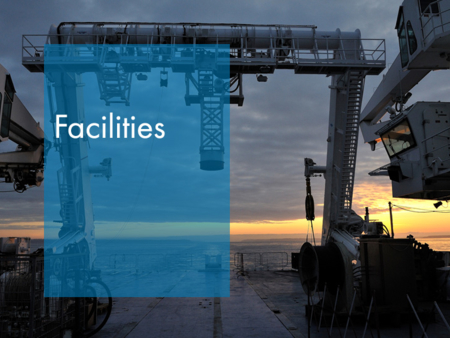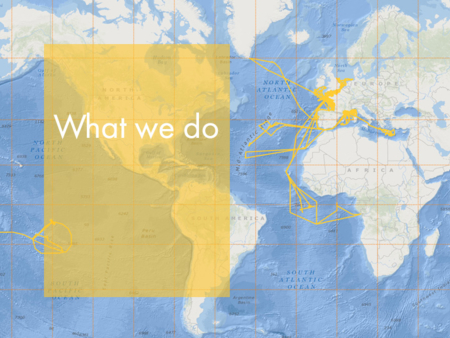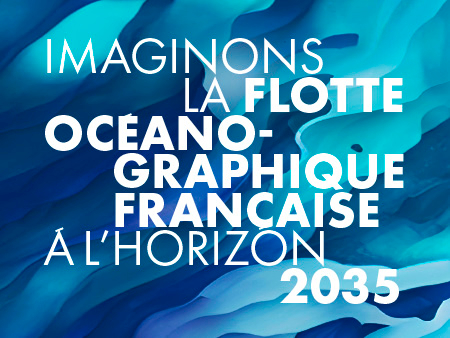2.4. The needs in terms of fleet evolution, resources at sea and human support
2.4.1. Needs for vessels and deep-sea machinery
- Coastal area: the long-range planning committee highlights the crucial importance of station vessels, requiring accessibility and programming flexibility. A subsequent evaluation of the campaigns is recommended, particularly in terms of archiving and making good use of the data and samples taken on these vessels. Emphasis is put on the importance of envisaging a replacement for the Sepia II station vessel, the oldest vessel in this fleet (1984). This vessel plays an essential role in research, observation (SOMLIT, REPHY, SRN, RESOMAR network, future phytoplankton-PhytObs observation network), teaching (at least 3 associated master’s courses, Degree teaching unit, national and international hosting placements), as well as public service (WFD, MSFD) and participation from scientific communication and popularisation actions (Sea Festivals, World Ocean Day, Science Festivals) and support for the maritime scientific centres for the public (Nausicaa, MAREIS).
- Coastal and shelf edge area: the need for a vessel to access shallow water (estuaries on Channel-Atlantic shores, draught of around 3 m) was expressed and solutions offered, particularly concerning the redeployment of the Antea. The need for an intermediate vessel (35-40m, 15 scientists) to be deployed on the Atlantic-Mediterranean zone to carry out multi-discipline coastal campaigns and to complete the majority of scientific observation missions is nevertheless highlighted as paramount (see 1.4.3, 1.5.1, 2.1.5, 2.4.4). A sheet was sent to the MENESR to be sent to the PIA3. A more exhaustive document giving a detailed description of the expected intermediate-size vessel is offered in Appendix 8. The modernisation of the Côtes de la Manche (and its “jumboisation”), by installing trawling equipment and multi-beam sounders for sediments and to increase places on board, is considered a priority. An exact definition of the equipment to be installed on board should be drawn up by interacting with INSU outfitting.
- Replacement of the Alis (leaving the Fleet in 2025 at the latest) must be envisaged. Theoretically we are also looking at an intermediate vessel (35-40m; 15 scientists) on the Indian-Pacific zone which can work on coastal and open-sea campaigns using a variety of equipment: trawl, skip, small ROV, etc. Based in Nouméa, the Alis regularly runs Physics, Biology and Geophysics campaigns in the South Pacific, from Papua New Guinea to French Polynesia. It has a notoriously small capacity, holding just 6 scientists. The specifications of this intermediate size “Pacific” vessel are also described more precisely in the document proposed in Appendix 8.
- Ice-covered seas: The only French ice breaker, the Astrolabe (or its future replacement), is not a research boat. Its use for oceanography throughout Adélie Land, subordinated to logistics for provisions at the French base at Dumont D’Urville, has always been limited due to strong logistical constraints weighing on the boat programming, leading to reduced and very occasional boat time on offer for research activities. It is also in a very limited geographic area (the coastal region of the Adélie Land). Access to a polar vessel equipped for scientific research is the essential device for quality research on the oceans and their interfaces in the Arctic and the Antarctic. It should actually be able to rely on controlled sampling strategies and programming, both for equipment deployments and recovery and for major sampling programmes and field measurements. Access devices to countries’ boats equipped with polar resources are currently an on-going discussion at European and international levels (particularly for the Arctic, ARICE). They remain backup solutions and are not intended to meet the significant needs of our community at the two poles.
- More specifically for fisheries and the growing requirements from public services (MSFD), it is essential to envisage a new medium-sized vessel (25-30 m) allowing trawling (basket trawling and line trawling) and dragging to replace the RV Gwen Drez and Thalia to assess vertebrate and invertebrate fishery resources on coastal and shore zones (i.e. draught adapted to shallow water, namely less than 3.50m). This vessel should be able to hold 10 to 12 scientists and be equipped to cover other compartments as well as fishery trawling for an ecosystemic approach: CTD type vertical hydrological profiles, hydrological sampling (organic and phytoplankton matter: Niskin bottle), zooplankton sampling (WP2 and Bongo net), sampling of ichthyoplankton (MIK net), sampling of eggs (miniaturised CUFES).
- Deep benthic open-sea area: the long-range planning committee recommends keeping two deep-sea (6000 m) submersibles operational, HOV Nautile and ROV Victor, whose complementarity and association with the AUV 6000 (on-going production) will guarantee all types of intervention (from exploration to the observation site, see 2.1.3; Appendix 5). The HOV Nautile is a resource with added value (useful load, mobility, direct visual handling) for deep-sea interventions, perfectly complementing the ROV Victor, adapted to site-type approaches with a dedicated elevator in long dives allowing repeated measurements, sampling and video observations. These two machines must last a long time and be developed to strengthen complementary functions for the next 20 years, not only to meet scientific needs but also to support public policy. For example, it is recommended to think about operating the ROV Victor whilst deploying other deep-sea equipment by cable (elevator, moorings) in order to limit the mooring ballasts left on the seabed as much as possible. It also highlights the need to improve the range of physical and chemical sensors on the machines and develop digital seismic gear.
2.4.2. Develop equipment on vessels
As far as equipment on vessels in concerned, the following is emphasised:
- The importance of modernising the vessels’ equipment, such as acquiring an electricity cable for surface sampling (core boring, etc.) as used to equip German vessels (such as RV Meteor) and an optics cable for the SCAMPI in order to watch HD video in real time (new camera) and give them the chance to reach 6000m.
- Keeping the complete sampling system in good condition and developing the use of Kevlar cables as widely as possible to operate metal-free CTD Rosettes.
- Developing the feasibility of long core boring on board ocean-going and coastal vessels, an important issue for the FOF. A work group was set up to consider a study of different sampling tools, their improvement and their implementation on IFREMER vessels, and the implementation of the CALYPSO core boring on the Atalante.
- Studying the feasibility of taking systematic sea-bed mapping measurements during transits, that would optimally make up for the lack of data on deep-ocean floor planes, far from the plate borders.
- In the open-sea, and on the pelagic coast, there is a strong wish to develop the optimum use of transits and missions by setting up automated bio-optical and biogeochemical sensors connected to arrival points for clean seawater feeding the (existing) thermo-salinometers and continuous multi-analysis systems like FerryBox or Pocket FerryBox.
- Installing a water purification system that is essential for geochemical and microbiological studies and clean rooms, or at least high-performance laminar flow hoods on all vessels.
- Implementing R&D to process data and information (automation, validation, extraction of useful information, multi-scale approach) for acquisitions along the way and for the observatories.
- The SHOM also outlines needs in overseas territory for a vessel equipped with an SMF and capable of launching a shallow water hydrographical speedboat.
2.4.3. On-board equipment
Several needs for equipment and functional improvements have been proposed:
- Make existing common resources in pools last a long time and improve them with access to all these resources regardless of custodianship, with support for implementing the equipment. The need is clearly expressed for a consolidated list of these common instruments. This accompanies the mobilisation of budgetary resources to guarantee the quality and good working order of the common equipment over time, but also develop all tools (OBS, seismic, core drilling, physical, bio-optic, geotechnical and chemical field sensors, etc.).
- Make essential mobile equipment available for non-destructive characterisation of sedimentary core drills (equipment installed in a mobile container including: photography, spectro-colorimetry, speed, gamma-density, magnetic susceptibility, radiography, XRF scanner);
- Produce an operational multi-trace seismic system towed close to the seabed, based on the “SYSIF” prototype made in 2014, in order to infra-metrically identify the sedimentary deformations present in the surface sediments at all depths of water with unbeatable accuracy;
- Set up a remote-operated drilling device by thinking about the possibility of obtaining this type of tool within the FOF or via agreements with European partners (e.g. British Geological Survey).
- Develop these chemical sensors in situ allowing us to trace the impact of the hydrothermal flows on the water column and the development of marine ecosystems; this also implies filling gaps in instruments between sampling the hydrothermal flow - i.e. Sealed titanium syringe, PEPITO and the water column via a clean CTD Rosette.
- Purchase a wave glider for communication with seabed sites. This glider would be operated by the DT INSU.
- Standardisation of protocols between fishery and ecosystemic campaigns positively generates a pooling of instrumentation (CTD, rosette, FerryBox and Pocket FerryBox, automated bio-optical sensors, Zoocam, etc.). It would be sensible for part of the resources to be kept on board or stored by Genavir, that could partly ensure maintenance and calibration every year.
- Autonomous diving beyond 60 m (limit of autonomous open-air diving) is going to be developed leading to the need for specific safety measures (decompression chamber on board).
- In fisheries, application of ethics rules regarding euthanasia of animals for scientific purposes will be applied in the future to sampling fish during fishery campaigns. This leads to developments in observation resources in fisheries either setting up “own” euthanasia systems on board (e.g. overdosed anaesthetic baths) for direct sampling or generalisation of non-invasive observation resources (acoustic, video, eDNA) some of which still have to be invented.
2.4.4. The observatories
One important characteristic in the observatories (station networks or fixed stations, instrumented sites) is the regular return to selected geographic regions. This implies de facto a long-term definition of work zones and geographic mobility of vessels and machinery that can be associated with them (ROV Victor, AUVs and HOV Nautile). Although this recurring programming imposes constraints when allocating days at sea on the French fleet vessels, acknowledgement of this need by assessment authorities represented a great step forward that must be maintained.
Developing new tools and the need to approach the marine ecosystem as a whole (from the physical-chemical system to the biological communities) tend to develop long term observation strategies towards:
- Multidisciplinary and multi-tool approaches
- The use of heavy machinery (Nautile, Victor, multi-trace seismic gear, penetrometer)
- The use of pools of large numbers of instruments (profilers, OBS, gliders, etc.)
- Regular interventions, concerning implementing permanent observatories in coastal and open-sea pelagic areas, or in deep-sea environments (EMSO programme), for sequencing studies on a site (including PIRATA, MOOSE, OISO, SURVOSTRAL….)
- Taking automatic measurements on workshop sites (instrumented moorings), on derived machinery (floats, gliders, AUV), from on-board instruments
- Renewed interest for the coastal zone and the continent shelf with use of continuously-made automated measurements between the coast and the continental margins (and beyond)
- No chance of having SNO for INEE teams, such as for recurring campaigns that are carried out every year around Kerguelen (THEMISTO, REPCOOAI) and that cannot claim labelling, which would help them avoid having to resubmit a dossier every year.
The essential need to work on the coast-open sea intersection, particularly on the whole continental shelf in the Bay of Biscay and also out at sea in the Channel-North Sea, Celtic Seas, Mediterranean Sea (MOOSE) requires a vessel with long autonomy (20-30 days), also big enough to get through the worst weather conditions and to hold the necessary quantity of equipment for mooring maintenance operations (e.g. 5 MOOSE moorings + 2 Météofrance buoys) It is now impossible to use smaller vessels, or it would mean complicated, very expensive logistics (several stop-overs with mooring equipment despatched in the stop-over port). The current need comprises a semi-ocean-going vessel equipped with suitable lifting capacity to maintain surface buoys and deep mooring lines, able to carry around 15 people.
The ocean-going research vessels are equipped with apparatus that allow on-route acquisition, broadcasting observations in real time to the Coriolis centre. The procedure is operational and must be maintained for the thermo-salinometers, hull ADCP and automatic weather stations. New sensors could be associated with it. The observation services have a high demand for the monitoring measurements that can be provided by these instruments.
In the coastal zone, or on a shallow scale, a similar action is put in place with the “Ferry-Box”. Technical progress and growing interest from other disciplines in on-route measurement lead to consideration of other parameters and the extension of other parameters (pCO2, cytometry in flux, other bio-optical measurements). Free water uptake systems are also desirable.
Maintenance on these instrumental networks is heavy-going and should be structured to guarantee the quality of the measurement and help it last over time-based series: selection of suitable platforms, choice of relevant parameters, identification of maintenance and validation teams, associated recurring credits.
This structuring could doubtlessly be expanded to opportunity vessels to carry out regular radials, often inaccessible by research vessel. These approaches, currently run by research teams, would certainly be easier if they were treated at organisation level.
In the overseas territories, the lack of national observatory should in time be made up for as these territories are particularly affected by climate change (polar and tropical zone).




